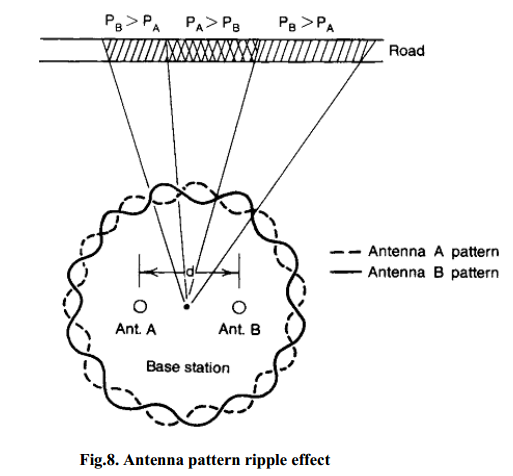Explain in detail about minimum separation of cell-site receiving antennas
8. Explain in detail about minimum separation of cell-site receiving antennas.
Minimum Separation of Cell-Site Receiving Antennas:
Separation between two transmitting antennas should be minimized to avoid the inter modulation. The minimum separation between a transmitting antenna and a receiving antenna is necessary to avoid receiver desensitisation. Here we are describing a minimum separation between two receiving antennas to reduce the antenna pattern ripple effects. The two receiving antennas are used for a space-diversity receiver. Because of the near field disturbance due to the close
spacing, ripples will form in the antenna patterns (Fig.8). The difference in power reception between two antennas at different angles of arrival is shown in Fig. 8. If the antennas are located closer; the difference in power between two antennas at a given pointing angle increases. Although the power difference is confined to a small sector, it affects a large section of the street as shown in Fig. 8. If the power difference is excessive, use of space diversity will have no effect reducing fading. At 850 MHz, the separation of eight wavelengths between two receiving antennas creates a power difference of ±2 dB, which is tolerable for the advantageous use of a diversity scheme.
 |
| Antenna pattern ripple effect |

